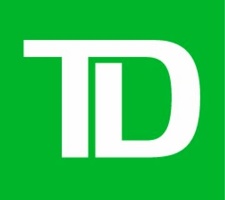@TDAM_Canada
Investor Knowledge + 5 Minutes = Current Insights
Focus on central bank messaging (guidance) has always been an important part of the investment industry. However, over the past several years it has become a huge focus, and not just in the investment community, but also for the average person. With the sharp rise in the U.S. Federal Reserve (Fed) rates, more and more people really started to focus on the Fed messaging to determine what would happen next. Would they raise rates further? When are they going to begin to cut? Is inflation stable yet? And like any form of communication, interpretation can vary leading to often mixed signals and different opinions.
This guidance from central banks, and particular the Fed on monetary policy is a critical driver of financial market performance and is increasingly becoming an essential component to help successfully navigate these markets. While there is no crystal ball to predict what will happen with any certainty, it's always helpful to formulate and think through the most plausible macro scenarios based on an assessment of macro drivers like leading economic indicators, monetary and government policies, and understand how they can impact investments.
In an effort to shed some light on this, Sam Chai, Vice President, Active Fixed Income and Vinoth Vykunthanathan, Vice President, High Yield Credit Research of TD Asset Management Inc. (TDAM) have recently authored an article titled The slow crawl towards monetary policy easing. In the article, the authors walked through what they feel is the base case scenario for interest rates and fixed income investment returns, as well as two other scenarios that can plausibly unfold for 2024.
The scenarios
The base case: of a soft landing - Consensus economic and Fed forecasts expect further disinflation as well as moderation of growth over the remainder of the year relative to 2023. We expect the Fed to deliver the first interest rate cut late in the second half of 2024 and deliver a total of 2 cuts by the end of the year. This is in line with Fed's latest forward guidance.
Inflation reaccelerates, and we are "higher for longer" – A reacceleration of inflation could be possible if economic activities and/or the labour market remains stubbornly strong leading to further elevated wage growth and strong underlying inflation. In this situation, the Fed will need to postpone the easing cycle to 2025 or even reinitiate further rate hikes.
A hard landing - A sharp deterioration in economic activity, together with continued disinflation progress, will likely incentivize the Fed to ease aggressively given the restrictive level of the current policy rate. In this scenario we could expect the Fed to deliver at least 3 cuts by end of this year and possibly more to support the economy. This is the least expected scenario.
The article goes on to provide insights on how these three scenarios can impact various fixed income investments.
Predicting is a precarious game
Predicting what will happen in the economy, and by extension in markets, with full certainty is a precarious game. And while a crystal ball would be ideal, it is important to map out different scenarios think about what is most likely to happen and act accordingly. For now, the markets are keeping a close eye on the timing of the first Fed rate cut, which we expect will be driven by the need to gradually loosen monetary policy rather than the desire to stimulate the economy.
For investors, despite the appeal of the higher yields being offered by short-term bonds, longer-term bond yields are expected to remain far more compelling today than they have been in years. Investors with a long-term time horizon would be well served to build diversified bond portfolios to benefit from the returns that corporate bonds can potentially provide over the long run.
The information contained herein has been provided by TD Asset Management Inc. and is for information purposes only. The information has been drawn from sources believed to be reliable. The information does not provide financial, legal, tax or investment advice. Particular investment, tax, or trading strategies should be evaluated relative to each individual’s objectives and risk tolerance.
Certain statements in this document may contain forward-looking statements (“FLS”) that are predictive in nature and may include words such as “expects”, “anticipates”, “intends”, “believes”, “estimates” and similar forward-looking expressions or negative versions thereof. FLS are based on current expectations and projections about future general economic, political and relevant market factors, such as interest and foreign exchange rates, equity and capital markets, the general business environment, assuming no changes to tax or other laws or government regulation or catastrophic events. Expectations and projections about future events are inherently subject to risks and uncertainties, which may be unforeseeable. Such expectations and projections may be incorrect in the future. FLS are not guarantees of future performance. Actual events could differ materially from those expressed or implied in any FLS. A number of important factors including those factors set out above can contribute to these digressions. You should avoid placing any reliance on FLS.
TD Asset Management Inc. is a wholly-owned subsidiary of The Toronto-Dominion Bank.
®The TD logo and other TD trademarks are the property of The Toronto-Dominion Bank or its subsidiaries.
 Canada
Canada

